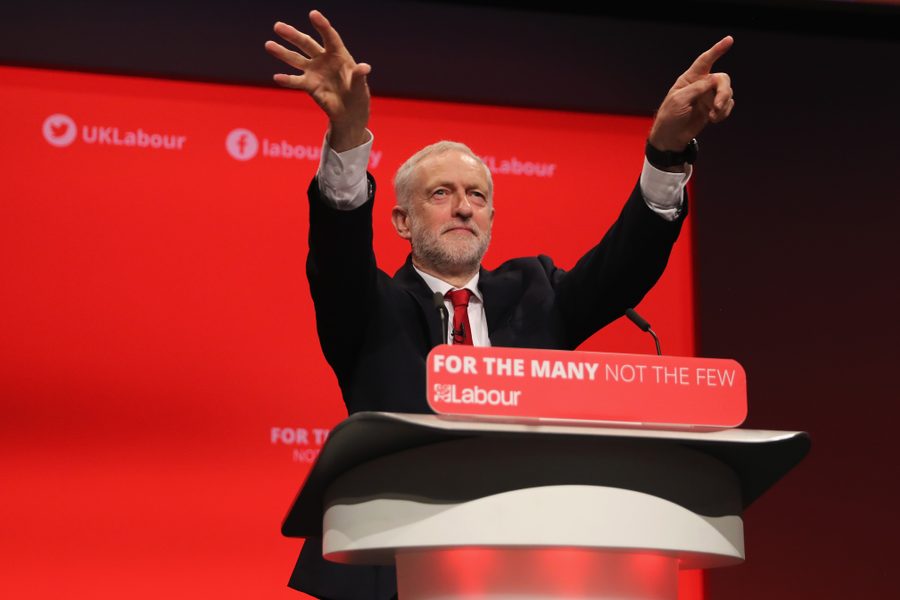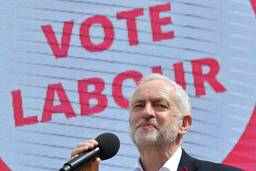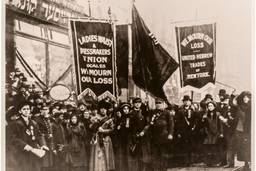The Absolute Buoyancy: Why Corbyn and Labour Are Up and the Conservatives Are Down
The message from recent party conferences was clear: Labour is ascendant, while UK voters are tiring of Theresa May and the Tories.
Richard Seymour

Theresa May’s dream, “the British Dream” in her words, is turning out to be a nightmare. “Like your worst anxiety dream,” as the BBC put it, “playing out for real.”
Following the carnivalesque atmosphere of the Labour Party conference in late September, Prime Minister May’s speech at last week’s Conservative Party conference came off as an extraordinary come down. The speech may have been written to recall the lyrical cadences of the West Wing’s President Bartlet, but it imploded upon May’s reading. A slogan on the conference’s set, promising a country that “works for everyone,” self-destructed as she spoke. A protester handed her a fake P45 notice announcing her termination. Her voice ground down to a hoarse whisper, as she coughed and struggled through her words.
It wasn’t just bad presentation, however. The Conservatives appeared traumatized, as though something had crashed through all their defences, leaving them blindly tearing at one another. May is dragging out her leadership, seemingly flaunting her incompetence in the process. Her rivals are refusing to let her stand down, even though they continue to sabotage her — foreign secretary Boris Johnson is effectively running an open leadership campaign in the right-wing press. The mutual blood-letting is the behaviour of people united only by disaster and the fear of worse to come.
That disaster, for the Tories, has been Jeremy Corbyn’s ascendant Labour Party. In the June election, Labour unexpectedly attracted millions of new voters and experienced its biggest increase in electoral support since 1945, destroying both May’s parliamentary majority and her aura of autocratic power. A new poll by BMG research shows that Labour holds a 5-point lead over the Tories among the general public, with voters now preferring Corbyn to May as their choice for Prime Minister.
The June election wasn’t just difficult for the Tories. It showed that all the old truisms no longer held up. The Left was supposed to be unelectable. Non-voters were supposed to be lost to the voting system. The reactionary press was supposed to crush anyone too left-wing, especially if they could be defamed as anti-British, as Corbyn relentlessly was. All the old verities were made to walk a tightrope in that election, and plummeted down to earth, one by one.
Delayed celebration
For the Tories, the current nightmare didn’t start with this month’s conference: it has been dragging on for months.
A well-attended fringe meeting at the Conservative conference featured a panel titled, “Is the intellectual initiative now with the Left?” The participants’ melancholy answer, overwhelmingly, was yes. A similar sadness has befallen the so-called “Centrist Dad” demographic, which has been the subject of gleeful meme making by Corbynistas. There was a time when Labour’s center-right had novelty, glamour and ideas, a profusion of think-tanks and publications supporting it. It was never a grassroots movement, but it had dynamism. No more.
The center of intellectual gravity during this year’s Labour conference instead was a raucous fringe event, run by the left-wing, Corbyn-supporting group Momentum, called “The World Transformed.” Meetings at the event were packed, featuring dozens of high profile intellectuals and celebrities such as Naomi Klein and David Harvey, as well as Labour MPs including Diane Abbott and Jeremy Corbyn. Buzzfeed’s Jim Waterson reported one centrist delegate, exiting the Momentum event, as saying, “Everyone in there is more attractive and talking about more interesting things.”
The celebratory atmosphere felt like a delayed reaction to Corbyn’s 2015 election as Labour leader. At the time, many on the Left had been too wary, too battle-scarred, too worried about the fragility of the gain, to celebrate much. And Corbyn’s leadership was immediately under attack by a Labour Right determined to see off this interloper as soon as it could conveniently be arranged.
The damage done by this disruption, the strength of anti-immigrant sentiment signalled by Brexit and the constant media fire from both the Tories and Labour’s right-flank all compounded such reticence. Since Labour’s shocking showing on election night, however, the sense among the party’s hundreds of thousands of members has been giddiness and exuberance, years of internalised defeat giving way to absolute buoyancy.
What comes next
Along with the jubilee of delayed celebration, those on the Labour Left are also aware they’re part of an upward trajectory that comes with considerable historical responsibility. Labour’s success isn’t due solely to a long-term curve to the left among younger generations. Since the Grenfell fire — in which dozens of working-class people, many of them migrant workers, lost their lives — a new popular class consciousness has begun to form in Britain.
This matters because Corbyn’s analysis has never stopped at elections. His message has always held that Labour has to organize ordinary working-class people, in unions and social movements, to defend their interests and look out for one another. It is this momentous task that now faces the Left in Britain. A left-wing Labour government without such an active base would be isolated, encircled by hostile forces.
So it was critical that Labour’s conference didn’t focus only on policies and motions. Thanks to Momentum, it also took on bold ideas and difficult organizational questions — industrial strategy, antifascism, affordable housing, feminist struggles — that stand outside any governing frame of reference.
Yes, Corbyn and Labour are preparing for the chance to govern. But the movements supporting them are awaiting the chance to change the country, irreversibly.

I hope you found this article important. Before you leave, I want to ask you to consider supporting our work with a donation. In These Times needs readers like you to help sustain our mission. We don’t depend on—or want—corporate advertising or deep-pocketed billionaires to fund our journalism. We’re supported by you, the reader, so we can focus on covering the issues that matter most to the progressive movement without fear or compromise.
Our work isn’t hidden behind a paywall because of people like you who support our journalism. We want to keep it that way. If you value the work we do and the movements we cover, please consider donating to In These Times.






